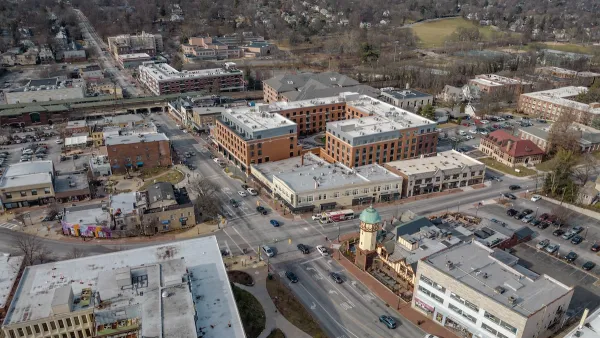Baltimore was only beginning to undo the ill effects of the architecture and planning response to the riots of 1968 when the protests and unrest of 2015 struck. Can the architecture field produce a more positive response to violence this time?
Elizabeth Evitts Dickinson begins a plea for urban designers to do better by noting the ripple effects of an earlier period of unrest in Baltimore.
"After Martin Luther King, Jr. was assassinated in April of '68 and Baltimore rioted, communities near [Maryland Institute College of Art] petitioned the city to rezone the neighborhood as residential only. No more corner stores. No more restaurants. If people could not gather, the thinking went, then they could not riot. Four decades later…witness the ripple effect."
Noting that architecture is in a soul-searching, perhaps soul-defining, moment, Dickinson wonders if the violence and despair of recent events in Baltimore could provide the field with an opportunity for redemption from its past and current mistakes.
"Can our buildings move beyond the soulless structures and aggressive infrastructure that we saw in the wake of '68, and offer instead beauty, civility, and respect? In January, the AIA dubbed 2015 'the year of the advocate,' and challenged members to become legislative activists. Will architects take up the cause of shaping the next American city into one that makes all of us—regardless of race, class, gender, and income—a welcome and vital part of civic life?"
FULL STORY: Architecture's Role in Baltimore

National Parks Layoffs Will Cause Communities to Lose Billions
Thousands of essential park workers were laid off this week, just before the busy spring break season.

Retro-silient?: America’s First “Eco-burb,” The Woodlands Turns 50
A master-planned community north of Houston offers lessons on green infrastructure and resilient design, but falls short of its founder’s lofty affordability and walkability goals.

Delivering for America Plan Will Downgrade Mail Service in at Least 49.5 Percent of Zip Codes
Republican and Democrat lawmakers criticize the plan for its disproportionate negative impact on rural communities.

Test News Post 1
This is a summary

Test News Headline 46
Test for the image on the front page.

Balancing Bombs and Butterflies: How the National Guard Protects a Rare Species
The National Guard at Fort Indiantown Gap uses GIS technology and land management strategies to balance military training with conservation efforts, ensuring the survival of the rare eastern regal fritillary butterfly.
Urban Design for Planners 1: Software Tools
This six-course series explores essential urban design concepts using open source software and equips planners with the tools they need to participate fully in the urban design process.
Planning for Universal Design
Learn the tools for implementing Universal Design in planning regulations.
EMC Planning Group, Inc.
Planetizen
Planetizen
Mpact (formerly Rail~Volution)
Great Falls Development Authority, Inc.
HUDs Office of Policy Development and Research
NYU Wagner Graduate School of Public Service




























